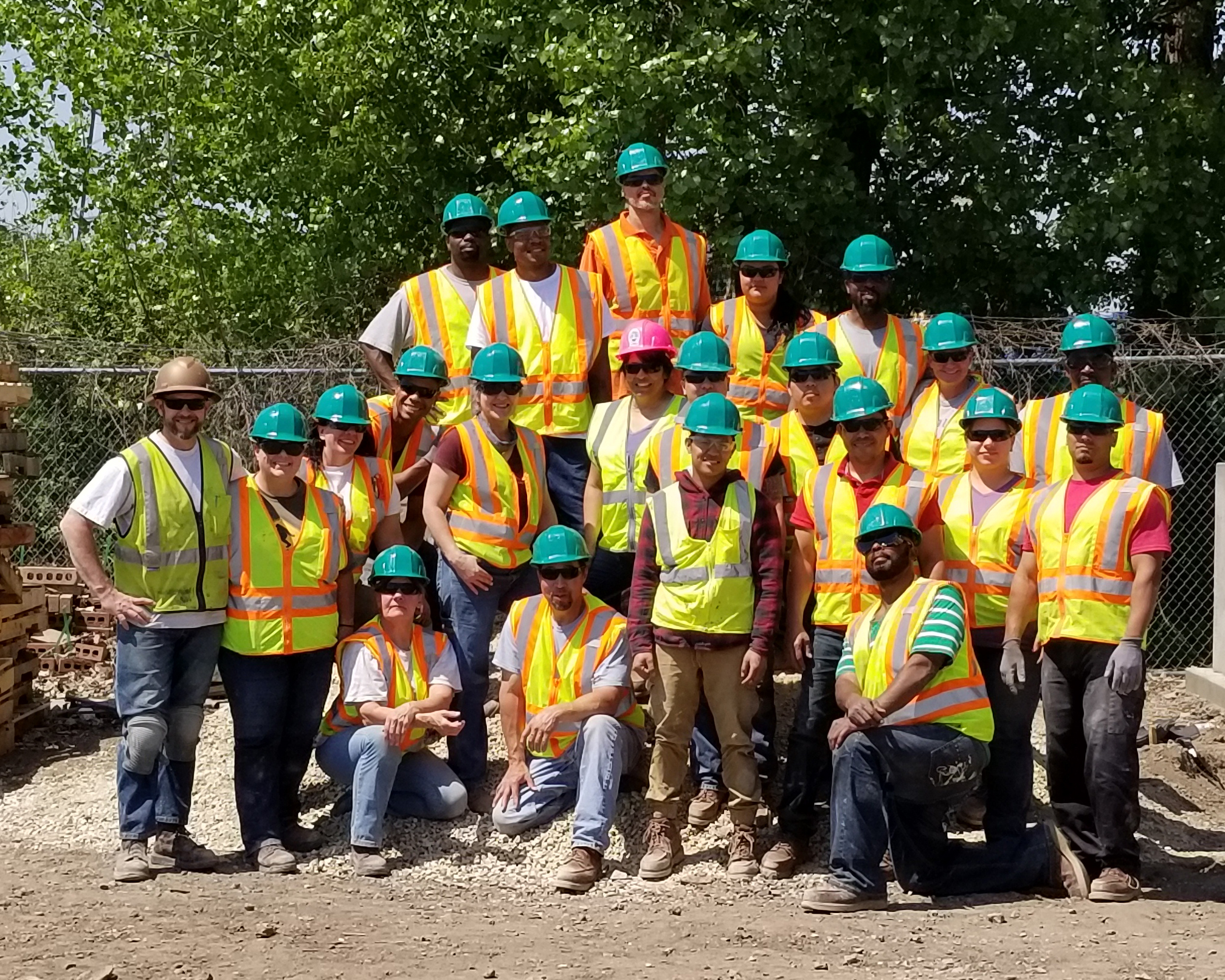

Share
Jamie Fisher is a single mother struggling to make ends meet working in cosmetology and office administration. In order for Jaime to buy her own home and support her daughter in her plans to buying a home in increasingly expensive Rochester, she needed to make a career change. Despite having family that are union roofers, she had never really considered the building trades. “I was brought up in an era where women worked in offices. College wasn’t an option.”
One weekend she was helping a friend pour concrete and really enjoyed it. “I was hooked,” Jamie said. Focusing on a concrete pour, a time-sensitive process, gave her a sense of clarity and enthusiasm. “When mud comes, something comes alive in me and I am excited.” Jamie was determined to get into a training program.
Minnesota Department of Transportation (MnDOT), and the Minnesota Department of Employment and Economic Development (DEED), provides highway construction pre-apprentice laborer training opportunities for women and minorities who are underrepresented in the highway construction industry. Cement Masons Local 633 administers the program at their JATC training center in New Brighton.
While in the program participants get pre-apprentice occupational training, OSHA-30 certifications, and job search support. Construction tools and boots are also provided at no charge. Along with Jamie, we spoke to two other program participants to understand the impact of the program.
What differentiates the MnDot/DEED program from others is that it is accessible to ex-offenders. According to DEED, “Highway construction occupations are often among the most accommodating to ex-offenders.”
John Sampson, whose name has been changed to protect his identity, is recently out of prison. John had spent a lot of his adult life in prison due to a drug addiction. He learned about the program during a prison-sponsored career fair.
Now, John is 45 months clean. In order to sustain his sobriety, John felt that he needed to create some distance from, “the environment I was around before. I couldn’t go back because I am tired of being locked up.” In his experience, the rigors of work in non-union residential construction in Anoka and Isanti County were so severe that is was common for laborers to abuse drugs to get through the workday. In a non-union setting the hours were longer with less safeguards to protect workers. John also used to wake up every morning with persistent soreness and strain. The common understanding was that everyone was, “addicted, an alcoholic, or in denial.”
With the support of the training program and the people he is meeting, John is confident that he will be able to remain clean and establish a relationship with a son who hadn’t seen him in 10 years. However, he also credits his son for teaching him. “I actually take his example. I learn from him. Part of living in recovery is learning new ways to live and living outside of what I know.”
Steve Smith was recently released after four years and eight months of confinement due to a drug and weapons charge. His name has also been changed to protect his identity. While Steve understands the consequences of his crime, it was a sense of desperation that drove his decision to start dealing. Money was tight and there were very few opportunities. “I did what I thought I needed to do in the moment, and it jammed me up…It didn’t hurt nobody but myself,” Steve said.
While inside, Steve was a prison laborer assigned to folding balloons with Anagram. Despite the Department of Corrections insistence stating otherwise, folding balloons didn’t put Steve on track to obtaining work following his release. Feeling unsure about job opportunities and his own skill set, he spoke with a job counselor that encouraged him to apply for the training program. “It was like a unicorn on top of a rainbow.” Steve further explained that, “I didn’t know this could be a career. I just thought that was for doctors and lawyers.”
Steve not only learned a trade but also changed his worldview. He is now a firm believer that everyone should have access to a driver’s license, as they are often a barrier for immigrants and those with restrictions on their license to obtaining well-paying work. In Steve’s opinion, the presence of these jobs and the reduction in barriers of entry such as driver’s license would contribute to lower recidivism. Ultimately, Steve is eager to continue his career in cement; “We build the world…I like it and I want in.”
Jamie has discovered a serious passion for concrete and finds the work to be therapeutic in helping to clear her mind. “I didn’t have time to sit there and think about the things that bothered my day.” It certainly wasn’t easy for her as a woman to step into a male-dominated industry. When she first started there were, “rows full of men looking at you… there was one woman and I felt inferior.” Nevertheless, her instructor Tom encouraged her from the beginning, helping her find the necessary confidence to continue and thrive.
“With concrete, for some reason, I connected with it. You take this massive mucky stuff and you form it, mold it…You can shape it into anything. You can construct buildings, patios, bridges, and roads. When you are done you have created a solid foundation. You can’t break it down completely. Even if you break it down into the finest form you can rebuild it into something solid. I feel like that’s part of my life, that’s who I am. I just have this passion and connection with it.”
Jamie has also found a line of work that can give her life direction and allow her to support her loved ones. She admits that the opportunity to be part of the MnDot/DEED program and the possibility to have a career in a trade is “a life changer for me. It’s indescribable; there are no words for that.”

